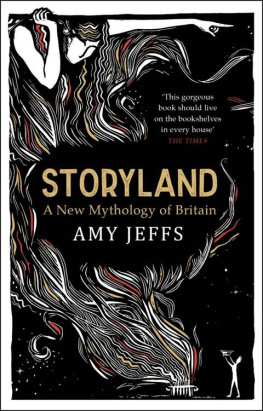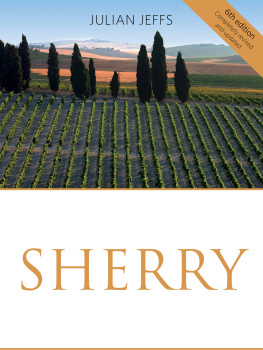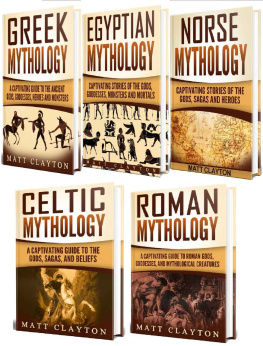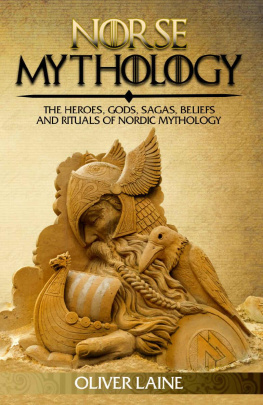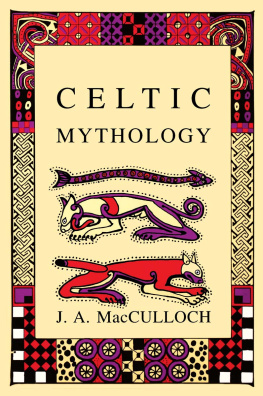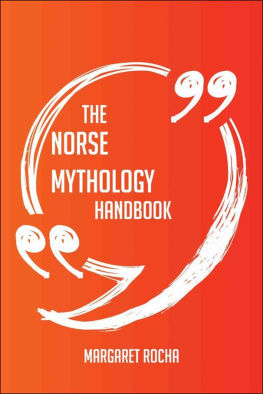Amy Jeffs - Storyland: A New Mythology of Britain
Here you can read online Amy Jeffs - Storyland: A New Mythology of Britain full text of the book (entire story) in english for free. Download pdf and epub, get meaning, cover and reviews about this ebook. year: 2021, publisher: Quercus Publishing, genre: Art. Description of the work, (preface) as well as reviews are available. Best literature library LitArk.com created for fans of good reading and offers a wide selection of genres:
Romance novel
Science fiction
Adventure
Detective
Science
History
Home and family
Prose
Art
Politics
Computer
Non-fiction
Religion
Business
Children
Humor
Choose a favorite category and find really read worthwhile books. Enjoy immersion in the world of imagination, feel the emotions of the characters or learn something new for yourself, make an fascinating discovery.
Storyland: A New Mythology of Britain: summary, description and annotation
We offer to read an annotation, description, summary or preface (depends on what the author of the book "Storyland: A New Mythology of Britain" wrote himself). If you haven't found the necessary information about the book — write in the comments, we will try to find it.
Storyland: A New Mythology of Britain — read online for free the complete book (whole text) full work
Below is the text of the book, divided by pages. System saving the place of the last page read, allows you to conveniently read the book "Storyland: A New Mythology of Britain" online for free, without having to search again every time where you left off. Put a bookmark, and you can go to the page where you finished reading at any time.
Font size:
Interval:
Bookmark:
Storyland
Amy Jeffs
A New Mythology of Britain

Contents
First published in Great Britain in 2021 by

An imprint of
Quercus Editions Ltd
Carmelite House
50 Victoria Embankment
London EC4Y 0DZ
An Hachette UK company
Copyright 2021 Amy Jeffs
Map and illustrations copyright 2021 Amy Jeffs
The moral right of Amy Jeffs to be identified as the author of this work has been asserted in accordance with the Copyright, Designs and Patents Act, 1988.
All rights reserved. No part of this publication may be reproduced or transmitted in any form or by any means, electronic or mechanical, including photocopy, recording, or any information storage and retrieval system, without permission in writing from the publisher.
A CIP catalogue record for this book is available from the British Library
Ebook ISBN 978 1 529407 983
This book is a work of fiction. Names, characters, businesses, organizations, places and events are either the product of the authors imagination or used fictitiously. Any resemblance to actual persons, living or dead, events or locales is entirely coincidental.
www.quercusbooks.co.uk

For my Grandmother,
Olive Crompton,
who taught me to love words.
Prologue
The tales to come are gilded by the rays of the setting sun. Written down and recited in a territory once believed to be at the westernmost edge of the world, their audiences also held themselves to be the last to witness the end of each day. To live in Britain then was to possess an edginess, a brinkhood, unknown to the great eastern citizens whose homes occupied the centre of the map. Yet myths drew threads across the globe and across time. The idea of Britain, what it was and where it came from, its connection to distant lands, and its own native qualities, fascinated its inhabitants then as it does now. Accounting for the mysteries of its coincidence of place and people produced the wondrous myths and legends that you are about to read: from stories of warlike giants and necromancers to the familiar adventures of Arthur, Merlin and King Lear. For centuries these tales moulded perceptions of Britishness. They still do, even if many have been forgotten.
Storyland began with pictures. As an academic, I had been studying medieval illustrations of the Brut chronicle (the origin myth of Britain) in illuminated manuscripts and wanted to try my hand. In 2018, I encountered the perfect medium: linocut. Linocut is a form of relief printmaking, as are wood-engraving and woodcut. Relief printmaking can teach you to draw in light, in the golden hour of low sun when shadows are long. You carve away your design and roll ink onto the raised surface, finally pressing the block onto paper. Print technology most notably movable type arrived at the end of the European Middle Ages and marks the close of the heyday of the manuscript or handwritten book. While it might seem counter-intuitive to illustrate medieval stories in print, which was alien to most of the period, the medium simultaneously evokes the medieval and the modern. It can evoke the pages of Wynkyn de Wordes late medieval edition of Le Morte dArthur and the Modernism of the early twentieth century.
I started with a series of three illustrations: The Death of Gogmagog , Diana Sends Brutus to Albion and Merlin Guiding the Building of Stonehenge . Three grew to seven and then twenty-four, as I was given the opportunity to publish them in Country Life magazine as a trio of articles about the myths and legends of Britain. Designing the prints and conducting the research gave rise to the book you now hold in your hands.
The way we imagine the Middle Ages is often affected by the Victorian aesthetic influence: this is something I wanted to undermine. The late medieval armour, pointed shoes and flowing sleeves of so many Pre-Raphaelite paintings of Arthur and his court represents a period of dress that considerably post-dates the writing down of the earliest Arthurian myths, which themselves were written down long after the time in which they are set (around the fifth century AD ).
So how should one go about representing the characters of a mythic age? When medieval artists of, say, the fourteenth century illustrated these legends, they updated the costume and technologies according to their own setting. When it came to imagining the past, the Middle Ages was a time of unconcerned anachronism. There wasnt such a sense of the look of the past, of costume evolving over time. The stories were personal and morally instructive. Readers were meant to identify with them. And while I didnt like the idea of illustrating these stories with people in twenty-first-century dress, I did like the idea of avoiding historic specificity: the idea of transforming the characters into timeless archetypes. For this reason I have shown figures as silhouettes or nude, or in the most generic, bland costume I could imagine, while capitalising on all the drama and emotion of their actions and experiences. I hope this brings the images into a world that feels at once contemporary, human and natural. I hope also that it places more emphasis on setting and experience, rather than time. The landscape is the one consistent presence, after all.
Here I offer you a story of an empty land filling with tribes from Syria, Troy, Egypt and Scythia, until it becomes a Britain you will recognise. You are entering a work of legend, based on medieval tales of Britains foundation and settlement that bear only a passing resemblance to true history, but offer many other kinds of truths. I am not going to attempt to separate all the fact from fiction. You will encounter gory saints lives, the haunting legends of the Welsh Mabinogion , the disturbing, enchanting tales of the South English Legendary , as well as Germanic legends of Weland the Smith and Havelok the Dane. These tales are more than words on parchment or paper. Moments from them were also carved into stone, ivory, and the wooden furniture of churches, painted into books and onto the plaster of domestic walls, woven into wall-hangings and stitched onto linen.
This is a journey through Britain and through time. Many of the places described here can be visited. Many of the stories include and account for monuments, landmarks and natural features that survive to this day. They are sacred places, beautiful and unexpected. And while they are too many to list here, they include prehistoric monuments like Stonehenge and Waylands Smithy; towns like Grimsby and Leicester; mountain ranges and lakes such as Snowdonia and Loch Etive and rivers including the Ness, the Soar and the story-silted Thames.
In the commentaries accompanying the retellings, I will introduce you to some of the primary sources Ive used and the circumstances of those sources medieval production and influence. I have looked for stories that have political implications, as well as their complement of marvels. While folklore no doubt lies behind some of the tales, it is not the focus of this book. Similarly, while I have touched on Irish legends that in turn touch on Britain, I have not presumed to represent the wealth of Irish mythological material with this narrative. These are separate, if contingent, traditions. As for the stories that do feature, you may notice a bias towards the deep past of the British, as opposed to that of the Scottish and English. The impact of the Brut tradition (pronounced brute, the origin myth of the British, of which you will read hereafter) was far-reaching and the same kind of material was not produced in a consolidated way in Scotland until the later Middle Ages. One explanation is that the Brittonic Celts arrived on these islands much earlier than anyone else and represented, especially to later settlers, a kind of indigenous presence whose stories could be used to the advantage of those in power.
Next pageFont size:
Interval:
Bookmark:
Similar books «Storyland: A New Mythology of Britain»
Look at similar books to Storyland: A New Mythology of Britain. We have selected literature similar in name and meaning in the hope of providing readers with more options to find new, interesting, not yet read works.
Discussion, reviews of the book Storyland: A New Mythology of Britain and just readers' own opinions. Leave your comments, write what you think about the work, its meaning or the main characters. Specify what exactly you liked and what you didn't like, and why you think so.

